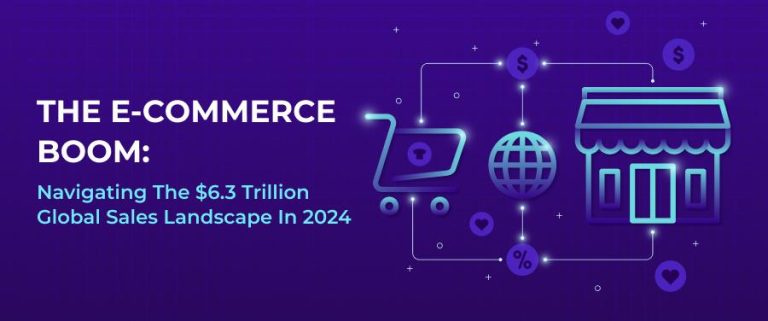A rapid surge in online shopping is redrawing the retail landscape, forcing traditional chains to rethink everything from store footprints to supply chains. As consumers shift more spending to e-commerce platforms, brick-and-mortar retailers are closing underperforming locations, renegotiating leases, and repurposing stores as fulfillment nodes and showrooms.
The pivot is reshaping strategy and operations across the sector. Retailers are investing heavily in logistics, last‑mile delivery, and data-driven personalization, while doubling down on services like buy online, pick up in store and same-day delivery. Those that adapt to an omnichannel model are capturing new demand and efficiency gains; laggards face thinning margins, rising return costs, and intensifying competition from digital-first rivals.
Table of Contents
- Consumers Flock To E Commerce As Stores Evolve Into Showrooms And Local Fulfillment Hubs
- Retailers Accelerate Omnichannel With Unified Inventory Curbside Pickup And Faster Last Mile
- What Works Now Build First Party Data Personalize Promotions And Partner With Marketplaces While Rightsizing The Store Fleet
- To Wrap It Up
Consumers Flock To E Commerce As Stores Evolve Into Showrooms And Local Fulfillment Hubs
Online transactions continue to outpace foot traffic as households seek convenience and selection, while physical locations pivot toward high-touch discovery and rapid dispatch; retailers are shrinking sales floors into curated demo zones, converting backrooms into micro-fulfillment engines, and syncing real-time inventory to power click-and-collect, curbside, and same-day services-effectively turning stores into neighborhood last-mile nodes that streamline conversion, reduce cart abandonment, and centralize returns without sacrificing brand experience.
- Operational shifts: RFID-enabled visibility, automated picking, dark-store hours for batching, and planograms that prioritize demos and service bars.
- Consumer expectations: accurate local stock status, narrow pickup windows, transparent delivery fees, and box-free, instant-credit returns.
- Merchandising: hero assortments on the floor, long-tail SKUs fulfilled locally or pooled across the network, with AR try-ons to bridge tactile gaps.
- Logistics: store-as-hub routing, bike and EV couriers in dense corridors, and dynamic safety stock to absorb promotional surges.
- KPIs to watch: digital-to-store conversion, order cycle time, pick accuracy, BOPIS unit economics, and carbon intensity per order.
Retailers Accelerate Omnichannel With Unified Inventory Curbside Pickup And Faster Last Mile
As digital demand surges, chains are consolidating store and warehouse stock into a single source of truth, turning every location into a fulfillment node and compressing delivery windows. Parking-lot handoffs now operate alongside ship-from-store and locker pickup, while micro-fulfillment and regional carriers shave hours off the doorstep handoff. The gains are tangible-fewer stockouts, higher conversion, and reduced split shipments-but execution hinges on shelf-level accuracy, real-time orchestration, and disciplined labor planning. Retail leaders are rebuilding order management, deploying RFID for item-level visibility, and piloting dark or flexible nodes to absorb peaks. With peak season approaching, speed, transparency, and low-friction returns are determining basket size as much as price.
- Unified visibility: One inventory ledger across channels to promise accurately and route intelligently.
- Parking-lot pickup at scale: Streamlined handoffs, status updates, and geofencing to trim wait times.
- Faster final mile: Store-based dispatch, regional carriers, and dynamic batching to meet tighter SLAs.
- Stores as service hubs: Ship-from-store, pickup, and returns processing to elevate utilization and margins.
- Returns as a loyalty play: Easy drop-off and curbside exchanges that protect lifetime value.
- Data-driven labor: Forecasting, tasking, and pick-path optimization to stabilize costs under volatility.
What Works Now Build First Party Data Personalize Promotions And Partner With Marketplaces While Rightsizing The Store Fleet
With e-commerce demand resetting the rules of brick-and-mortar, retailers are concentrating on measurable levers that convert traffic efficiently, protect margin, and widen reach-anchoring strategy in owned data, precision offers, marketplace scale, and a streamlined physical footprint aligned to omnichannel fulfillment.
- Build first‑party data: accelerate loyalty enrollment at POS and checkout, capture consented identifiers, unify IDs across app, web, and store, and activate clean-room partnerships for privacy-safe insights.
- Personalize promotions: calibrate offers to customer value and price sensitivity, trigger messages from real-time behaviors (browse, cart, proximity), and apply suppression rules to avoid over‑discounting frequent full‑price buyers.
- Partner with marketplaces: expand assortment and test categories with minimal inventory risk, leverage marketplace media for incremental reach, and integrate shared logistics to speed delivery and reduce last‑mile costs.
- Rightsize the store fleet: pivot underperforming locations to omnichannel nodes (BOPIS, ship-from-store, returns hubs), prioritize smaller formats in dense trade areas, and exit overlap markets while retaining service coverage.
To Wrap It Up
As e-commerce redraws the retail map, legacy chains are accelerating omnichannel investments, pruning and repurposing store footprints, and retooling supply chains. Physical locations are shifting into showrooms, service centers, and fulfillment hubs, while marketplaces and direct-to-consumer channels widen reach but intensify price and discovery battles. The shake-up is remaking roles across the sector, with demand tilting toward logistics, data, and engineering, and with sustainability and regulatory scrutiny rising on packaging, delivery, and data practices.
What comes next will turn on execution: balancing speed with profitability, taming returns and last-mile costs, and rebuilding loyalty amid abundant choice. As the line between online and offline continues to blur, the retailers that integrate channels and experience most effectively are poised to set the pace-while the rest race to catch up.


